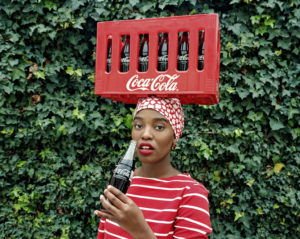
Tony Gum
Indian Lady
About:
Artistry, grace, beauty, depth of expression and self-reflective truth means she naturally transcends the confines of a singular narrative or form of expression. Her ethereal yet candid nature is captured in every piece, culminating in the symbolic practice wherein the artist offers her entire being as canvas; body, mind and soul, fused together as modalities of expression. Tony is art and, art is Tony. Represented by the Christopher Moller Gallery in South Africa, Gum has since inception been guided by the freedom, language and rhythm of life that is art. Tony Gum’s often minimalist yet considered approach to story telling, translated onto canvas, has to date informed her distinctive evolutionary journey. Also central to her growth, the grace and alchemy experienced in her work which, immediately connects one to her artistry. A self-reflective artist, Gum offers considered perspectives to the meta-narratives of an ever-changing world. It is no wonder then that Tony Gum and Christopher Moller found parity, given the gallery sees itself as a place where, ‘the Loveless will find love, a place where beauty and truth always matter’.

Milk of Human Kindness
Aptly entitled, ‘Ode to She’, Tony’s latest work, intuitively completed at the beginning of South Africa’s 2017 commemorations of women’s month (celebrated on the 9th August locally each year) explores, and encapsulates the essence of what it means to be a Xhosa woman, a human expression of ‘womanhood’. Notwithstanding this, Tony Gum believes in honouring our individual truths. The ability to pause, reflect, connect and celebrate that which makes each of us ‘whole’ means, we are better placed to recognise and honour this very essence in others. The principle that sustains and connects each of us; ‘That process of being a woman or human is so wonderful, how about we pay homage to that? How about we understand and acknowledge this…we tend to look past each other, we don’t see each other for who we are, sometimes we miss our own personal experiences, the truths of being an individual. So this work, ‘Ode to She’, is a letter to self’.


2,3 crates/From Free Da Gum Series
Tony Gum’s exhibitions are by nature a dual and deeply engaging experience. In the first instance, it is an intimate still life, human encounter with the artist. Her arresting spirit captured as photographic canvas means, the viewer gaze lingers as though in conversation with the artist herself. A second aspect of the experience with Tony’s work is the story and narrative explored. Each aspect replies on and is, seamlessly woven into another. Her physical form and photography extended as methods of instruction, relaying the stories and personal perspectives of her world. Perhaps Tony Gum’s artistry offers a third dimension to ponder. The opportunity to witness life held constant, a reminder that in essence, each of us are works of art; we manifest in the physical, as canvas and vessel holding together our unique life’s story. Like the different stories in this exhibition series, our individual story comprises the spiritual expression of who we ‘really’ are; our ‘calling’, our ‘song’, our life’s ‘poem’ and ‘ode’.

Xhosa Woman Umfazi
Tony’s new work, ‘Ode to She’ is an invitation to experience the narrative of transition and transformation; the journey in Xhosa tradition known as, ‘intonjane’ when, a young girl ‘intombi’, bare chested, adorned in traditional beads and ‘imbaola’, a traditional natural body clay, becomes a woman ‘umfazi’ and later, ‘umama omkhulu’ or ‘ixhego’ – old lady. Different rooms in the gallery, symbolic of the distinct stages and process of transitioning among Xhosa women, also reflect the tapestry of rural life, thatched kraals, dry veld and cloud filled skies symbolic of the complexity of early life years. In the foreground, each stage captures the extent to which women in particular, navigate multiple narratives.
*****
